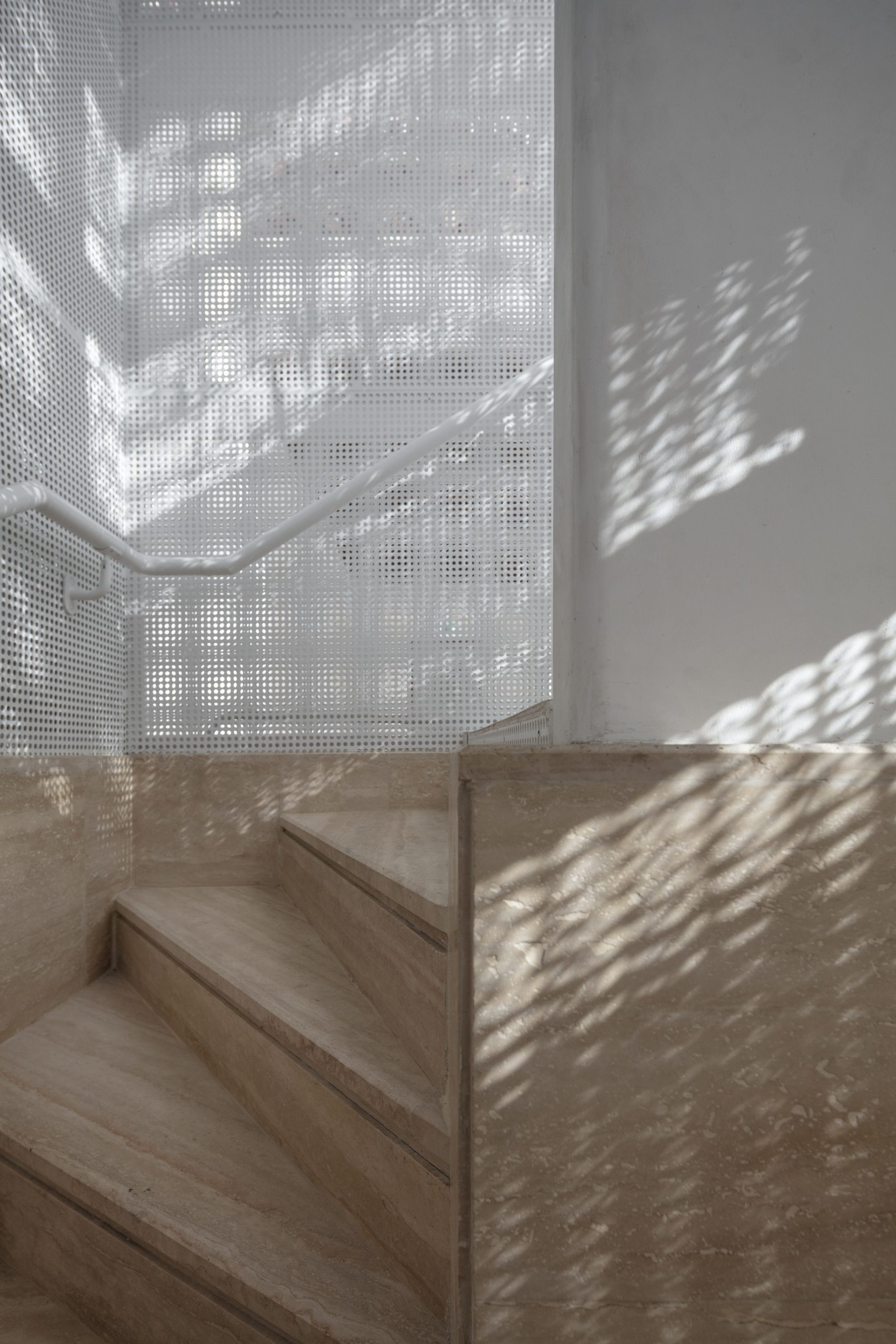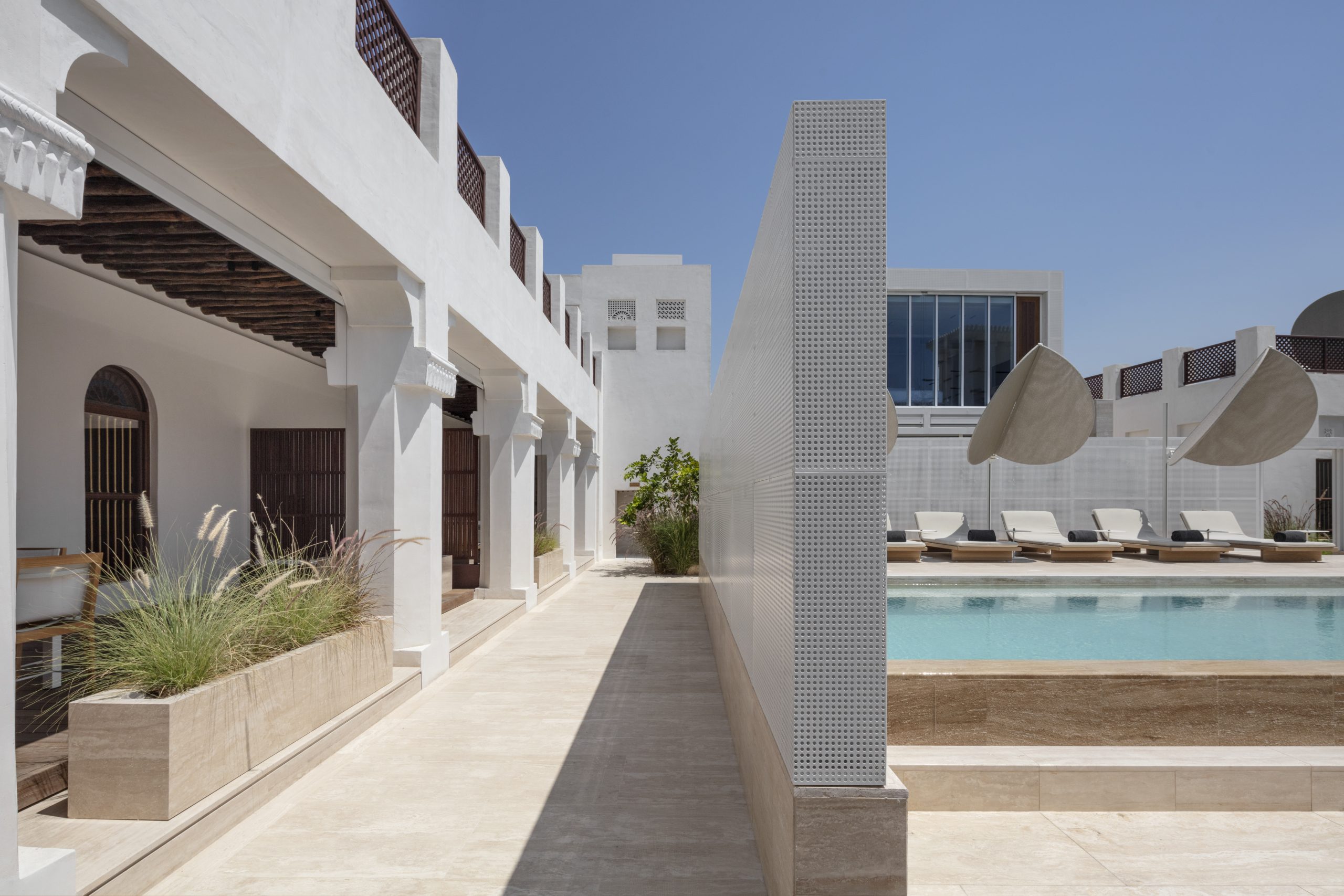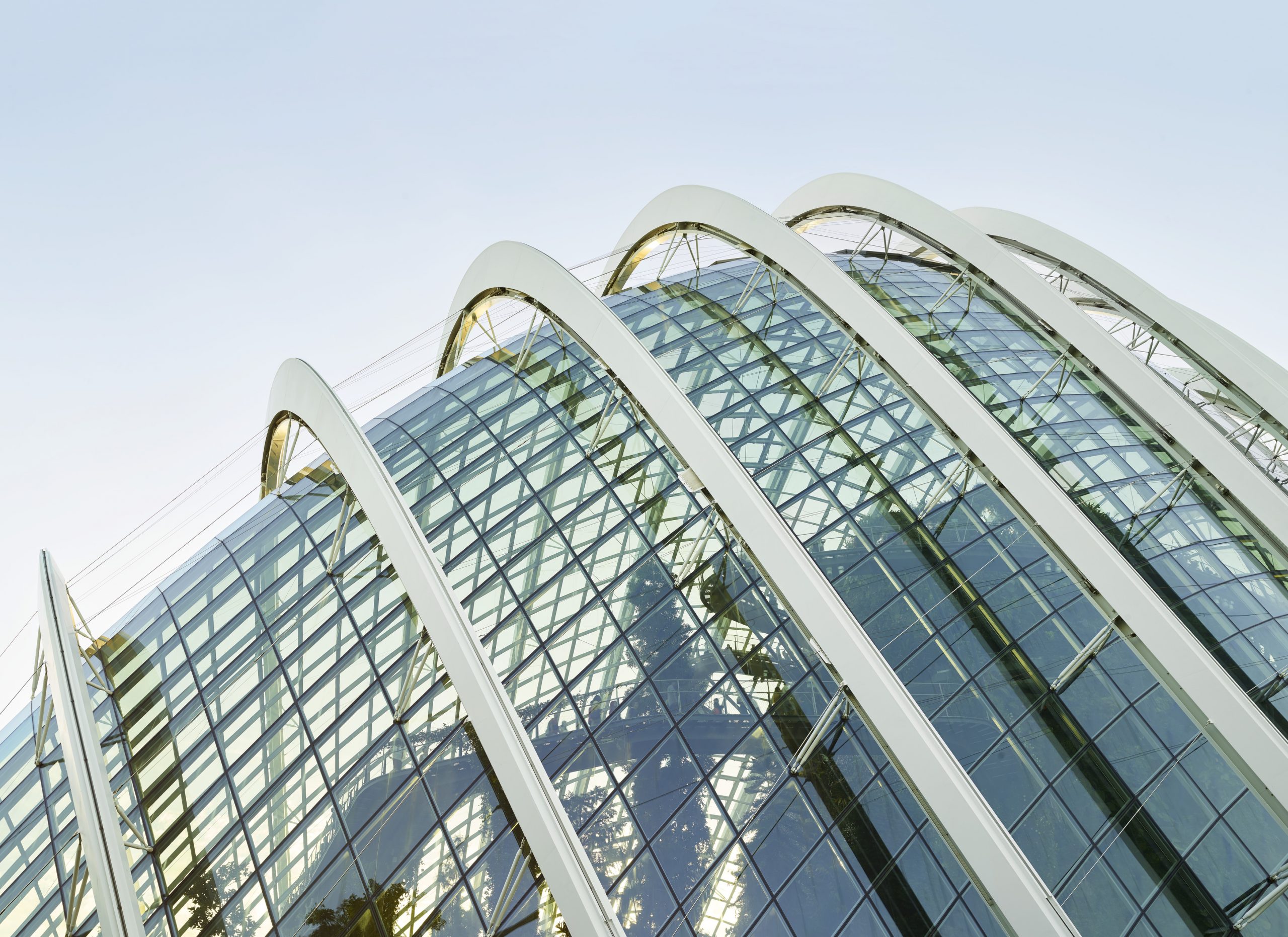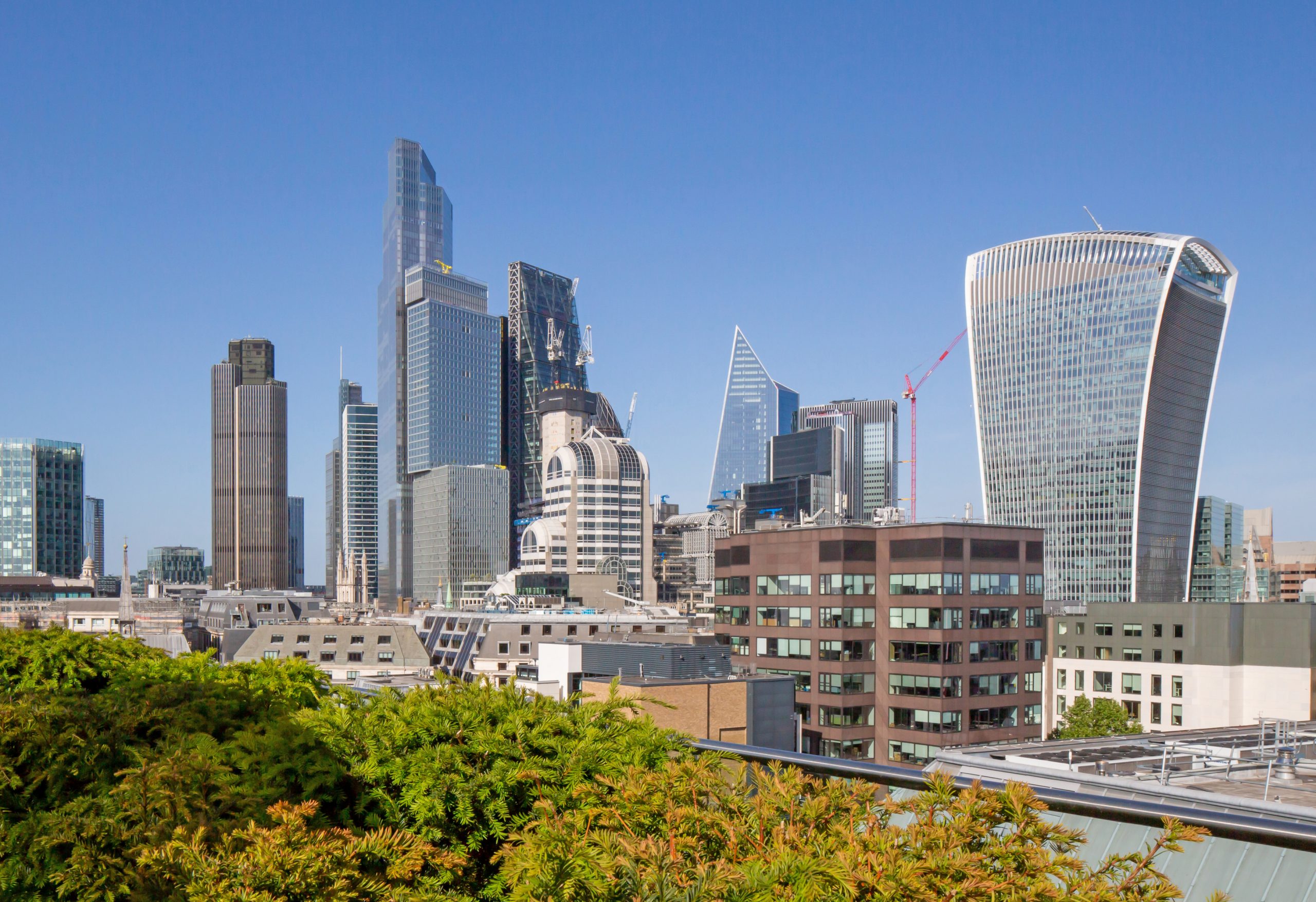Copyright © 2025 Motivate Media Group. All rights reserved.
A Greener Future
identity speaks to various architects and academics to see how the future of sustainable design and architecture is shaping up.

How do we tackle sustainability in contemporary architecture and design without compromising aesthetics? Architects and designers often find themselves straddled between limited timelines, client budgets and extensive research on the authenticity of materials.
“‘Sustainable design’ is a paradox,” shares Professor Louise Valentine, Head of School of Design at the School of Textiles and Design at Heriot-Watt University Dubai. “The concept of sustainability is a benchmark for quality, and our interpretation of it enables us to gauge a designer’s commitment to design excellence… Across the world, we see two crises fundamentally changing our lives: the climate crisis and the diversity, equity and inclusivity crisis. As we explore this juncture with bold imagination and ambition, the next responsibilities for design will unfold, and the necessary discoveries about what constitutes sustainability will be made.”

Current trends
Jonathan Ashmore, Founding Principal at ANARCHITECT, observes a significant shift in client awareness and preferences. “We have seen more demand for unique, contextual and well-considered design solutions over the quick-to-market ones, which also shows a more progressive respect for sustainability in regional architecture.” He notes that repurposing and transforming existing buildings not only reduces carbon footprint but also breathes new life into structures, ensuring their historical and cultural relevance.
Jeffrey Meawad, Founding Architect at JM Design & Architecture, adds, “Sustainable architecture has evolved to incorporate energy-saving techniques, natural design elements and smart technology. It’s crucial for us to adapt to these changes and integrate sustainable practices into our work.” Meawad emphasises the importance of using natural materials and minimising waste, such as in the Mariolino by the sea Bodrum restaurant and beach bar, where natural materials and abundant greenery were used.

Innovative materials and technologies
Ashmore confirms the value in sourcing natural materials locally to reduce environmental costs and to draw on the contextual vernacular of construction materials used historically. “For example, in regions where stone is abundant, we explore innovative structural uses of this material with progressive engineers. Similarly, we use low-carbon mixtures for concrete and, where suitable, employ rammed-earth construction methods.”
Meawad underscores the vital role of understanding clients’ needs and integrating sustainability into the design process. “For instance, we designed a roof covered with solar panels, serving as a striking design feature. Sustainable design can save money over time and inspire innovative ideas.”
Ayman El Hibri, Director at WilkinsonEyre, agrees that it is important to select materials that have a low carbon footprint throughout their lifecycle. “Our approach includes using materials with high recycled content and recyclability. This commitment to sustainability is evident in projects like the Citibank project in Canary Wharf, London, where all materials used meet stringent Environmental Product Declaration criteria.”


Integration of sustainable design principles
Ashmore highlights too the adoption of passive design strategies. “Clients are more aware of energy consumption and are requesting materials with longevity and local sourcing. This approach reduces reliance on artificial energy sources and enhances the overall comfort and functionality of spaces.”
Meawad stresses the value of understanding clients’ carbon footprints and incorporating basic sustainable principles like reducing, reusing and recycling. “We design spaces that maximise natural light to reduce power consumption, and use low-E [low-emissivity] glass to improve thermal efficiency.”
El Hibri argues that sustainability must be an intrinsic part of architectural design. “Treating sustainability as an afterthought undermines its potential to effect meaningful change. Instead, it needs to be fully integrated into every stage of the architectural process, from initial design concepts to construction and eventual decommissioning.”
Annamaria Lambiri, Chair of the Department of Interior Design and Associate Professor of Interior Design at American University of Dubai, adds, “The attention to sustainable approaches in design supports the minimisation of environmental impact, the optimisation of buildings’ performance, and enhances occupants’ health and well-being.” She adds that sustainable initiatives focus on eco-friendly materials, energy-efficient solutions, renewable energy integration, waste reduction and water conservation.

Economic benefits and regulatory impacts
Ashmore explains that sustainable buildings often result in long-term savings through reduced energy consumption. “The use of energy-efficient systems and durable materials can lower operating costs over time and enhance property value.”
Meawad concurs: “Sustainable design offers clear economic benefits, including lower energy bills, higher property values and long-term savings from reduced maintenance costs.”
El Hibri also notes that sustainable buildings typically command higher market values due to lower operational costs and healthier spaces. “Projects like 8 Bishopsgate in London demonstrate that sustainability positively impacts rentability and marketability.”

Notable examples
Ashmore shares the example of The Serai Wing at Chedi Al Bait, a transformation of 1950s merchant houses into a twelve-suite boutique hotel. “This project showcases the careful balance of introducing contemporary architectural interventions into characterful and traditionally recognisable buildings,” he says.
Meawad mentions the Bosco Verticale in Milan and Beirut Terraces in Downtown Beirut as examples of sustainable architecture that enhance environmental quality and human experience.
El Hibri, meanwhile, cites 8 Bishopsgate and Gardens by the Bay as projects that seamlessly integrate sustainability and aesthetics. “8 Bishopsgate is one of the first towers in the UK to achieve BREEAM Outstanding [certification], demonstrating exemplary embodied and operational carbon considerations.”
The integration of sustainable design principles into contemporary architecture not only addresses environmental concerns but also enhances the aesthetic and functional quality of spaces. As Ashmore aptly puts it, “Sustainable design is not just about creating buildings; it’s about creating better futures.”
Read more features here.
The Latest
How Eywa’s design execution is both challenging and exceptional
Mihir Sanganee, Chief Strategy Officer and Co-Founder at Designsmith shares the journey behind shaping the interior fitout of this regenerative design project
Design Take: MEI by 4SPACE
Where heritage meets modern design.
The Choreographer of Letters
Taking place at the Bassam Freiha Art Foundation until 25 January 2026, this landmark exhibition features Nja Mahdaoui, one of the most influential figures in Arab modern art
A Home Away from Home
This home, designed by Blush International at the Atlantis The Royal Residences, perfectly balances practicality and beauty
Design Take: China Tang Dubai
Heritage aesthetics redefined through scale, texture, and vision.
Dubai Design Week: A Retrospective
The identity team were actively involved in Dubai Design Week and Downtown Design, capturing collaborations and taking part in key dialogues with the industry. Here’s an overview.
Highlights of Cairo Design Week 2025
Art, architecture, and culture shaped up this year's Cairo Design Week.
A Modern Haven
Sophie Paterson Interiors brings a refined, contemporary sensibility to a family home in Oman, blending soft luxury with subtle nods to local heritage
Past Reveals Future
Maison&Objet Paris returns from 15 to 19 January 2026 under the banner of excellence and savoir-faire
Sensory Design
Designed by Wangan Studio, this avant-garde space, dedicated to care, feels like a contemporary art gallery
Winner’s Panel with IF Hub
identity gathered for a conversation on 'The Art of Design - Curation and Storytelling'.
Building Spaces That Endure
identity hosted a panel in collaboration with GROHE.
















